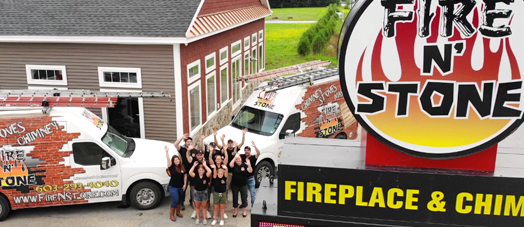Caps vs. Crowns vs. Covers
If you’ve ever looked up at your chimney and wondered, “What the heck is all that stuff at the top?” this blog post is for you. Most homeowners don’t give much thought to what’s happening on the top of the chimney unless something’s leaking or there’s a bird stuck up there.
But believe it or not, those bits and pieces sitting atop the chimney do a lot of heavy lifting when it comes to keeping your home safe and your chimney working properly. They might sound like names for the same thing, but they’re actually quite different, and each one plays an important role.
Let’s break it down in plain English.
 Chimney Cap: The Chimney’s Umbrella
Chimney Cap: The Chimney’s Umbrella
The chimney cap is like a little metal roof that sits right over the flue’s opening. It’s usually made of stainless steel or copper, and it’s attached to the top of the flue pipe, not the entire chimney structure.
Think of the cap as an umbrella for the flue. It keeps rain, snow, animals, and leaves from falling straight down into the chimney. It also has a mesh screen to prevent critters, like birds, squirrels, and raccoons, from getting in while letting smoke escape.
A chimney cap also helps stop sparks from flying out and landing on the roof, which is important if you have a wood-burning fireplace.
Chimney Crown: The Chimney’s Rain Hat
Now, moving a bit lower to the crown. This concrete (sometimes mortar) slab sits on top of the entire brick or stone chimney structure. It’s poured around the flue but doesn’t cover it.
The crown’s job is to seal off the top of the chimney and divert water away from the sides of the masonry. Water is the number one enemy of your chimney, and a cracked or poorly built crown is one of the main reasons chimneys deteriorate.
There’s a catch, however. Crowns are often made too thin or from the wrong materials, like leftover mortar instead of proper concrete. This leads to cracks, which lead to water damage, which leads to expensive repairs or complete rebuilds. So, if your crown is looking rough, it may be time to call in the pros for a fix.
Chimney Cover: A Cap With Broad Shoulders
Here’s where things might get a bit confusing. Sometimes people use “chimney cap” and “chimney cover” interchangeably, but in the chimney world, they can be different.
A chimney cover is usually a full-width metal lid that covers the entire top of the chimney, not just the flue. It often includes a built-in cap for the flue and may protect the crown, too. You’ll usually see these on factory-built chimneys or in setups with multiple flues.
The chimney cover offers the same benefits as a cap—rain protection, animal proofing, spark guarding—but with a little extra coverage. It’s perfect for chimneys with multiple flues or if you want to give your crown a break from constant exposure to the elements.

Which One Do You Need?
Honestly, you probably need all three or at least a cap and crown.
- If your chimney doesn’t have a cap, rain is going to go straight down the flue, and critters will have an open door to come in and make the chimney their home.
- If the crown is cracked, water is probably seeping into the brickwork, and that’s going to lead to trouble down the road.
- If you want extra protection, a full chimney cover might be the way to go, especially in areas with harsh weather.
Chimneys might seem simple, but their design is all about protecting your home from fire, smoke, water, and wildlife. Caps, crowns, and covers each play a role in protection. If you’re unsure what’s up there, or if what’s up there isn’t doing its job, call Fire N’ Stone. We’ll take a look and let you know what’s working, what’s not, and how to keep your chimney in tip-top shape.
Fire N’ Stone is the go-to chimney and fireplace expert in central New Hampshire. Our technicians are certified by the Chimney Safety Institute of America, and we don’t subcontract any of our work. Call us today or fill out our online form to book an appointment.





